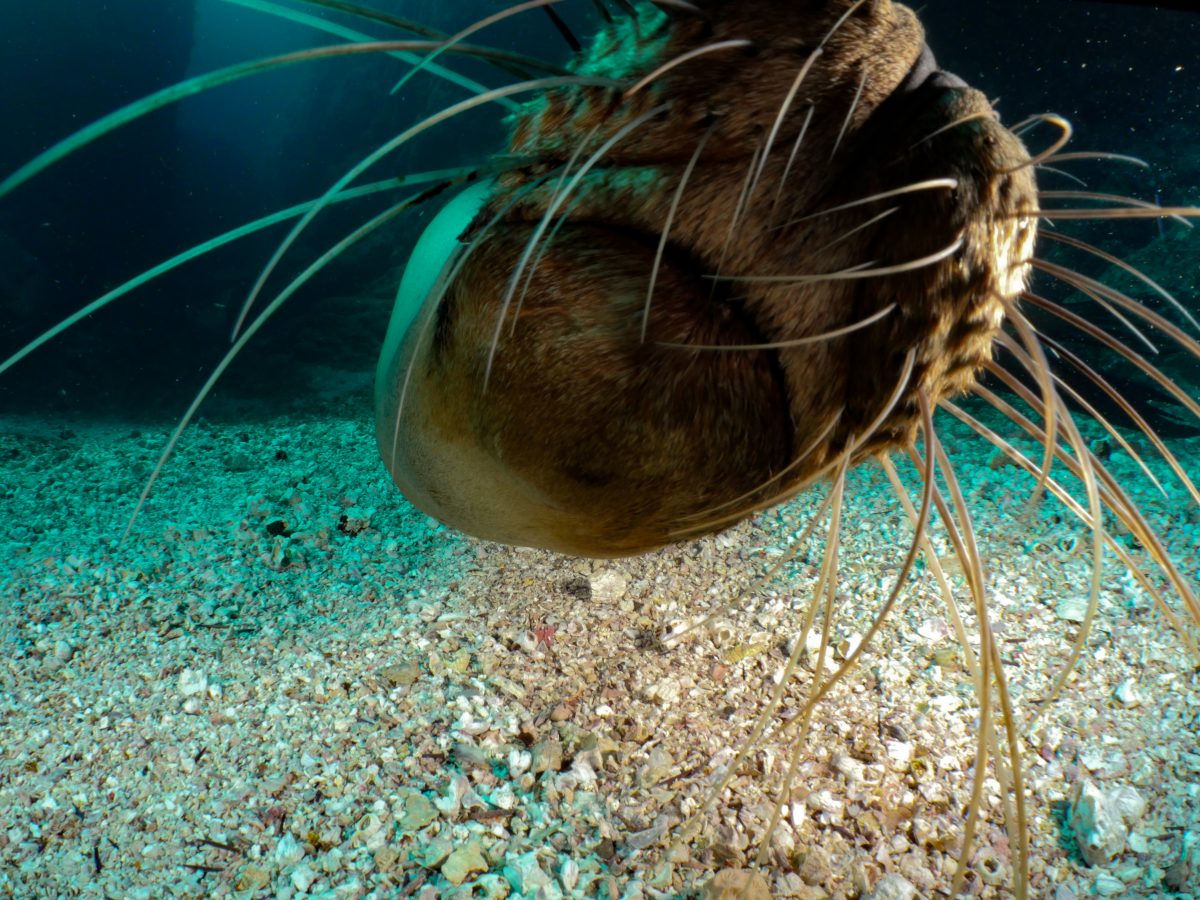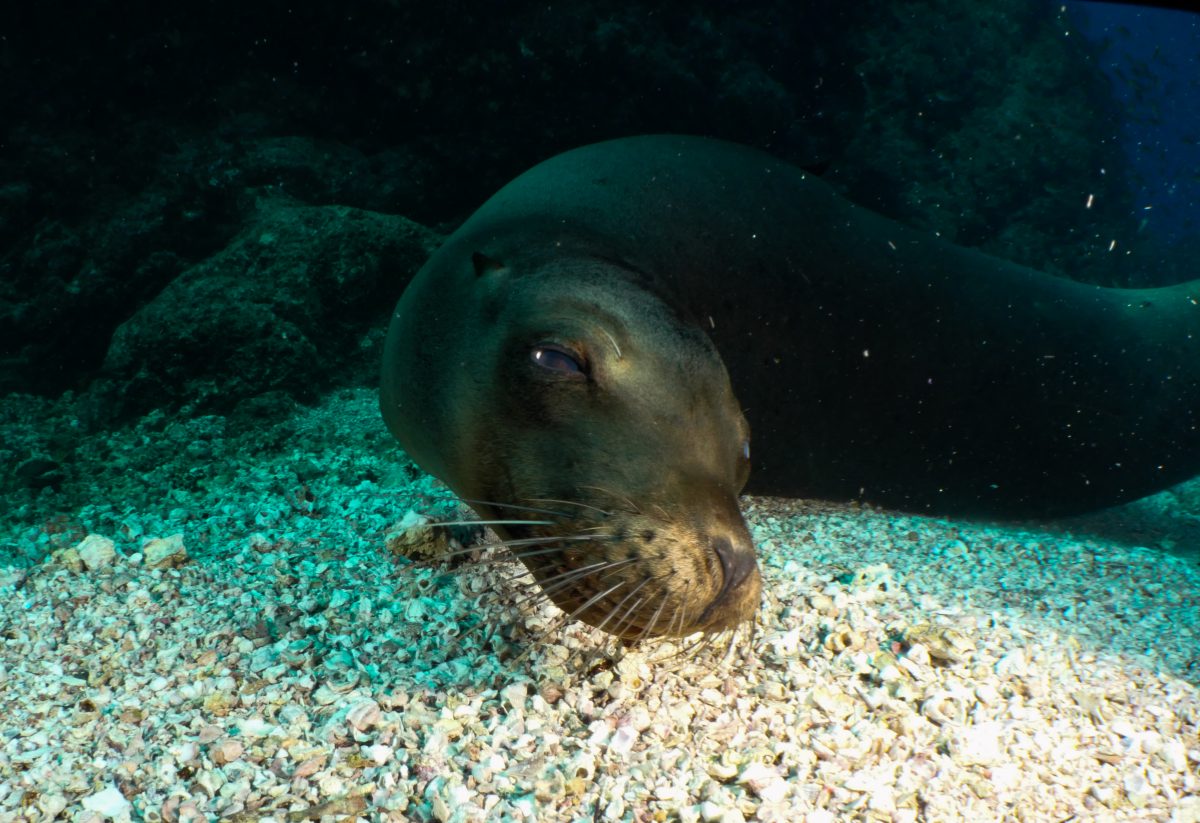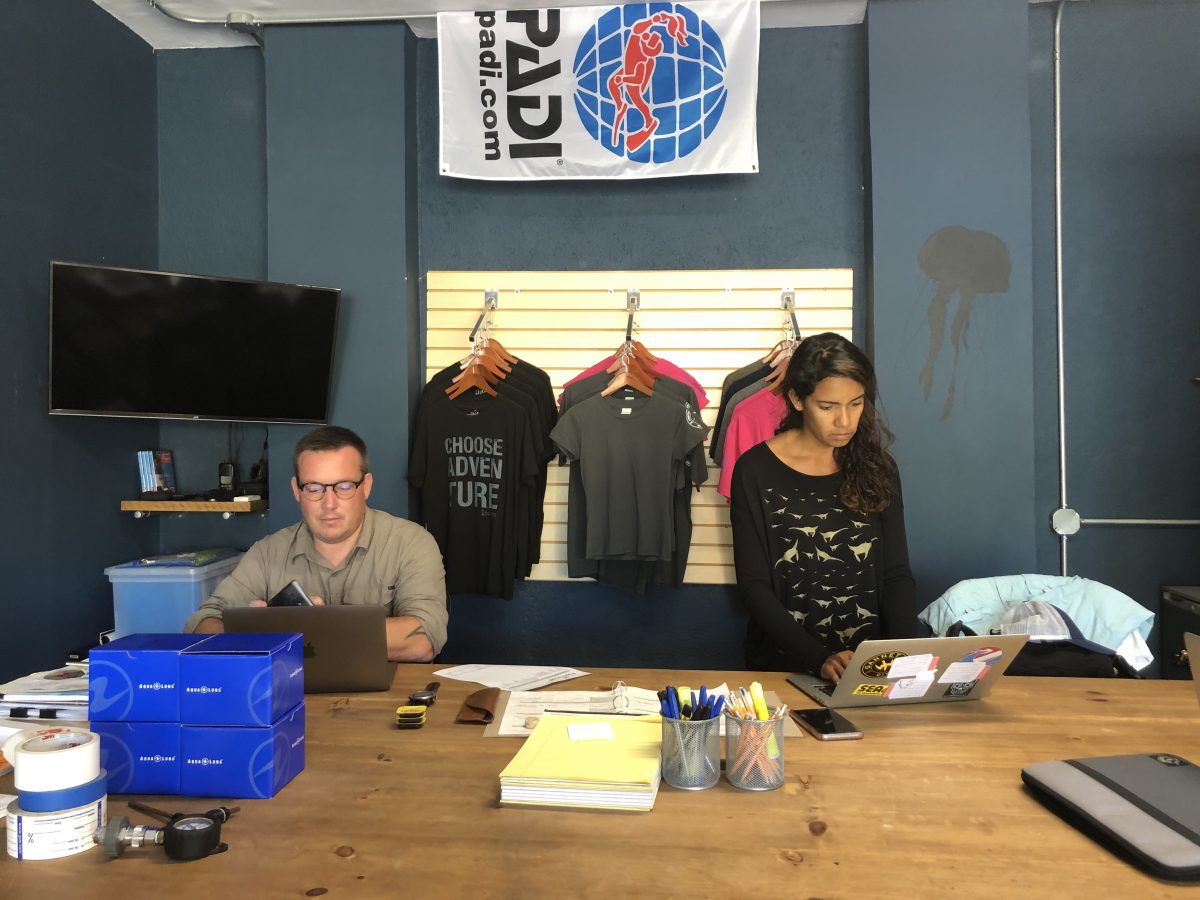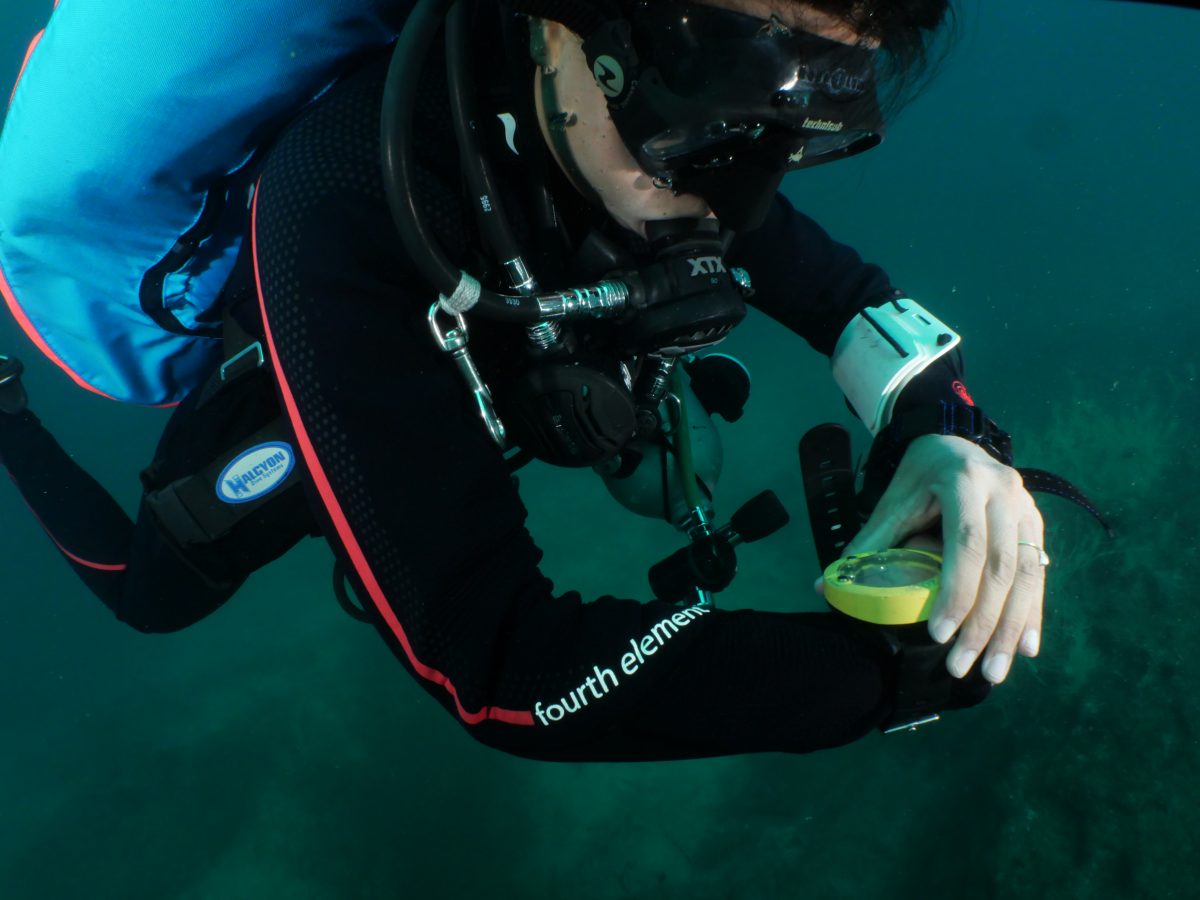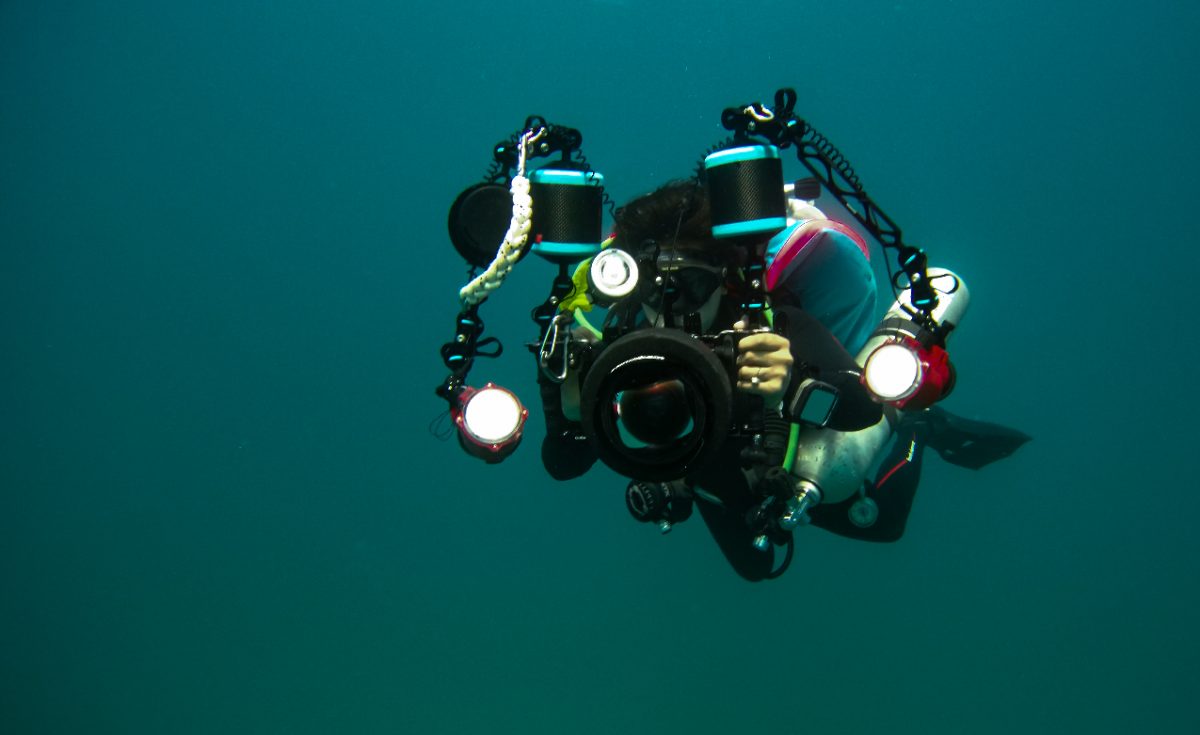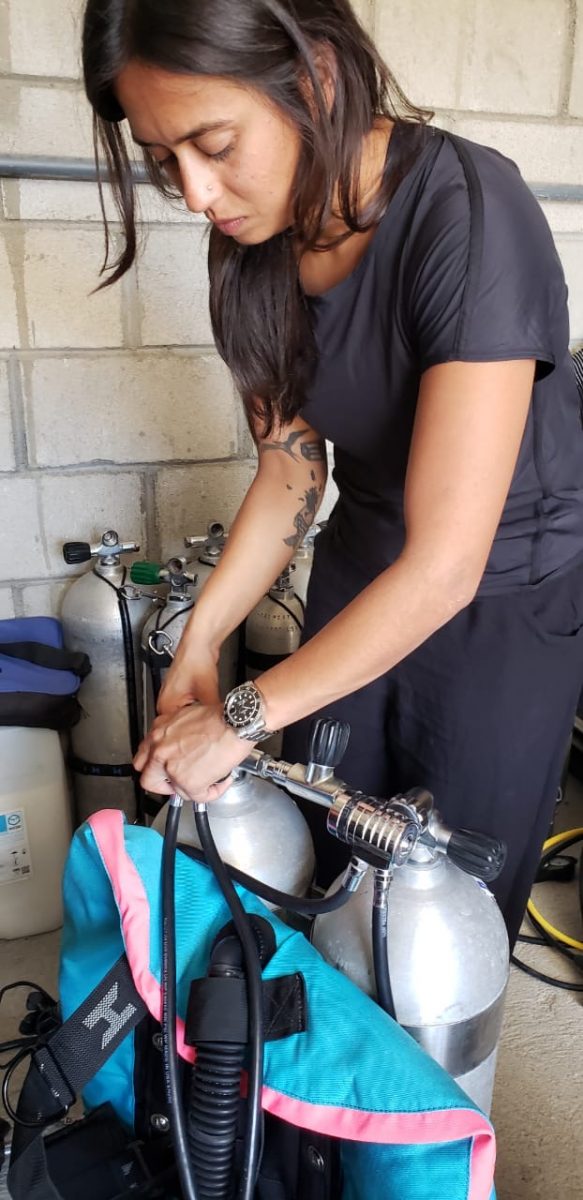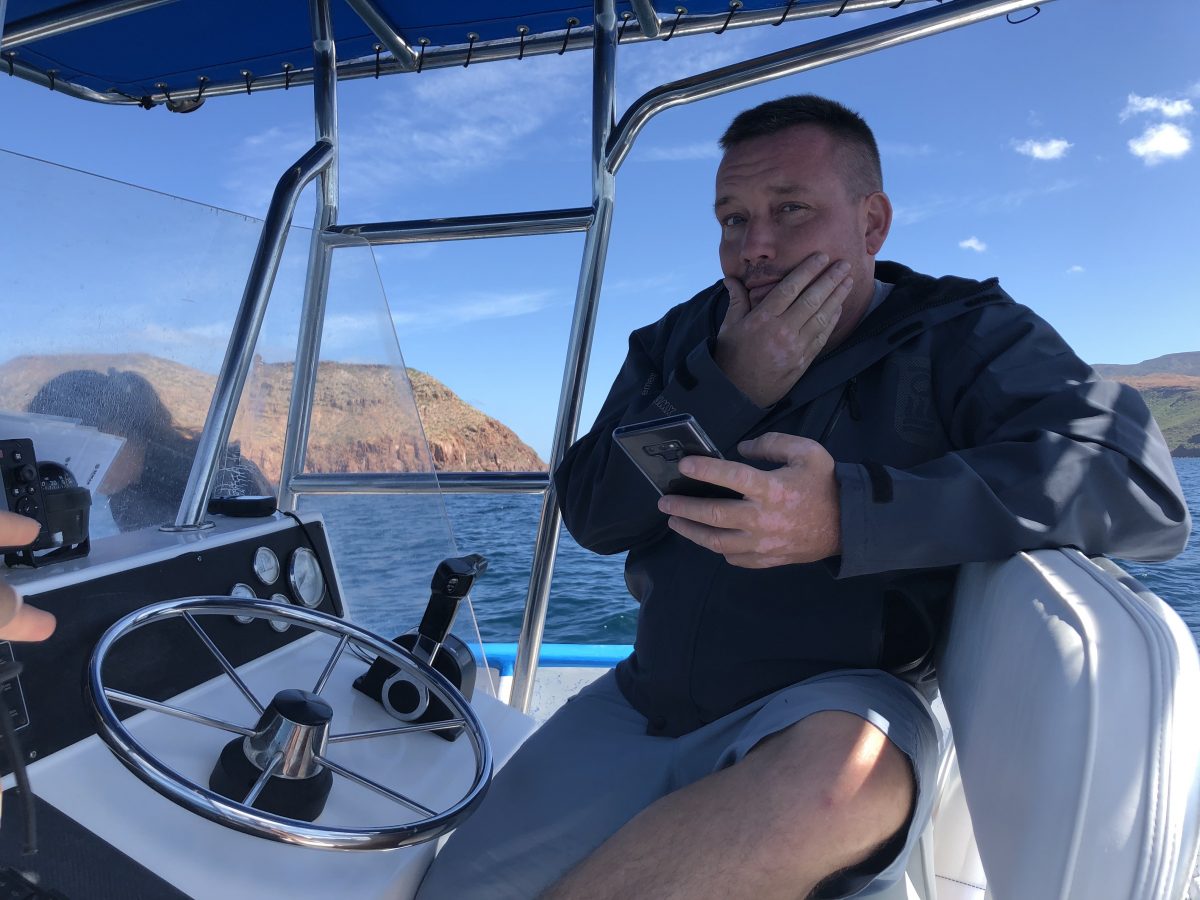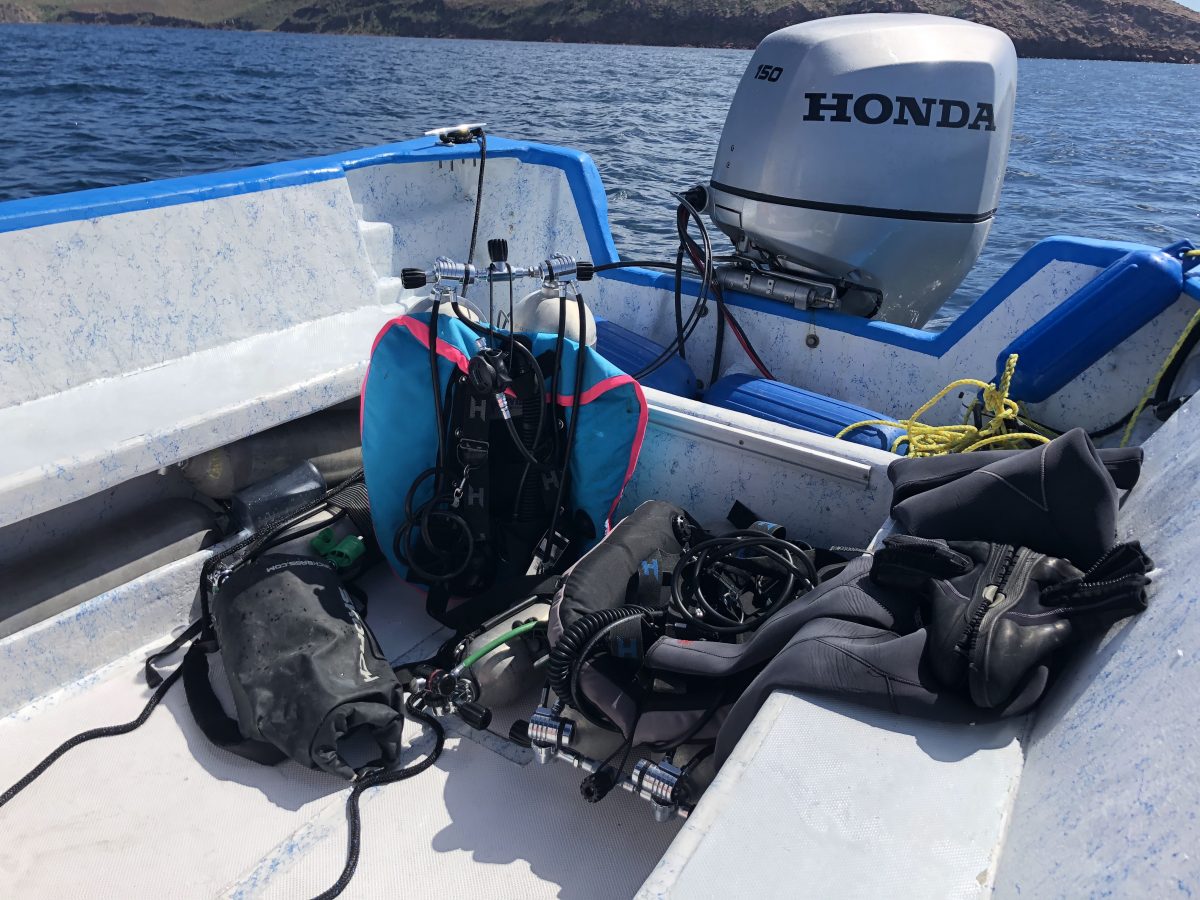I am Back in La Paz! I returned to dabble in Tec Diving with Luke Inman at Cortez Expeditions. Luke has been involved with the Scholarship society for years, and has lived here in La Paz for the past 20. As an instructor with many different certifying agencies like PADI, TDI, IANTD etc. with over 23 years experience he was a great choice for my introduction to the world beyond recreational diving.
We spent our first couple days doing theory at his dive shop! The shop is great space located in a marina on the outskirts of La Paz. It is a constant hub of activity with clients, and friends coming in and out. Over the years, Luke and his business partner Afelandra Gonzalez have built a great business and a reputation as tec divers. They have worked with scientists like Adrian Munguia Vega (the geneticist I worked with recently here) to take deep eDNA water samples all over the gulf, tagged hammerheads, and have rescued lost ROVs for researchers from over 60 meters.
Tec – short for technical deep diving allows people to dive deeper for longer using different gas blends, and planning for decompression time. Though more dangerous, and more difficult, it is a sport that emerged in the 1990s and has become a type of diving of its own. It is characterized by the fact that unlike recreational diving there is a ceiling that prevents you from returning to the surface. Whether it is a tangible ceiling like in Cave or deep wreck exploration, or a metaphorical ceiling created by decompression obligation, when on a technical dive you have to have redundancy and backup so you do not have to ascend to the surface in an emergency situation.

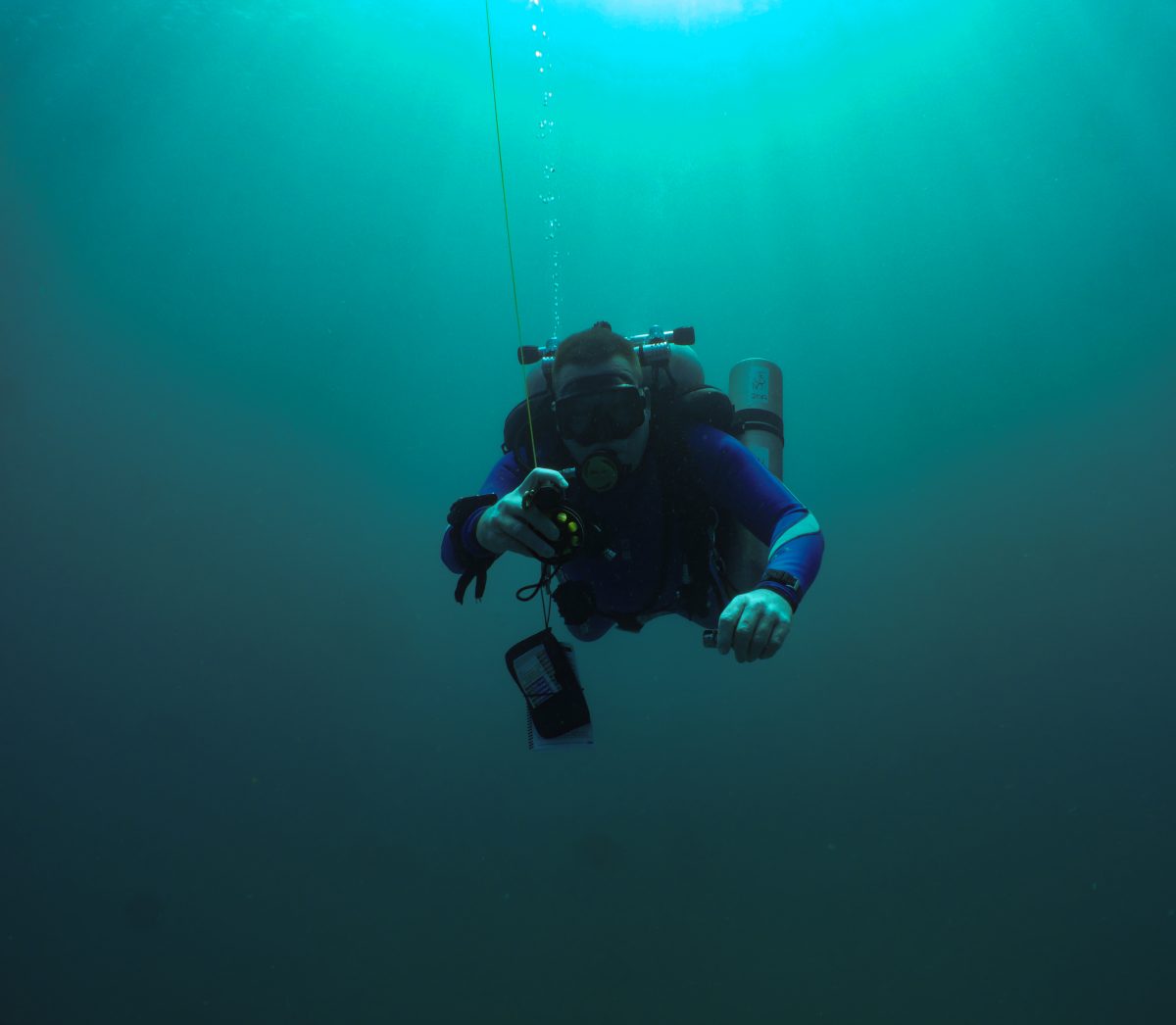
Because of this, technical dives require precise planning that can account for depth, gases used, and proper decompression to ensure a safe dive that shouldn’t result in decompression illness or in reaching levels of oxygen toxicity. As divers, we all know about decompression sickness, or “the bends,” caused by nitrogen saturated in our tissues coming out of solution too fast and causing bubble induced symptoms, which can be fatal. In technical diving oxygen toxicity also becomes a risk. Though oxygen is the gas we need to survive, it can be toxic in high partial pressures. The partial pressure of a gas is the amount of pressure that it would exert in a mixture of gases if it occupied the same volume on its own.
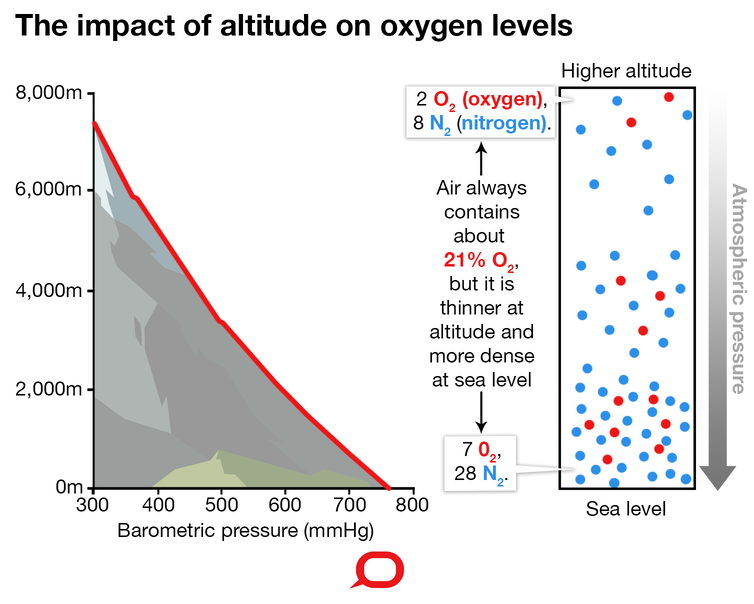
This image shows how partial pressure of gases change with altitude. As atmospheric pressure decreases, so does the partial pressure of each gas because the volume the gas needs to occupy is increasing. This is why at altitude it is difficult to breathe.
The opposite happens when diving. When under higher pressures, the partial pressures exerted by each gas increase. This is why nitrogen will load into the tissues faster at deeper depths. It is also the reason why, when technical diving, planning to prevent oxygen toxicity is vital. At sea level (or 1 atmosphere) the partial pressure of oxygen is 0.21, because oxygen composes 21% of regular air. In scuba diving the general rule of thumb is to not surpass a partial pressure of oxygen of 1.4. When planning technical dives, you want to find a balance of elevated oxygen gases that will reduce DCS risk, while not surpassing the toxic partial pressures of oxygen. Below 50m this becomes difficult, and divers start using Trimix where a percentage of nitrogen in the gas is replaced by helium, which does not have the same narcotic effects as nitrogen.
I am here however, doing the PADI Tec 40, and 45 courses, which means I will not be using Trimix. I will instead be focusing on learning the theory and skills needed for me to plan dives with proper decompression and oxygen content. After our first couple days in the classroom we got wet! These were my first dives with my new Halcyon backplate, as well as doubles, and a decompression mix clipped to my side. Getting used to buoyancy and the feel of the equipment was my first priority. Luke and I spent the day in less than 10m of water working on buoyancy and trim, and skills like air sharing, gas switching and valve shutdowns on the doubles.
After the initial shallow water training, we were off to do some deeper dives. The first couple, though deepish (around 25m) are not real decompression dives. Instead, to ensure that I can react well in surprise emergency situations and can use my equipment properly, we just simulated decompression stops, and gas switches, as well as a couple surprise emergency situations Luke kindly provided.
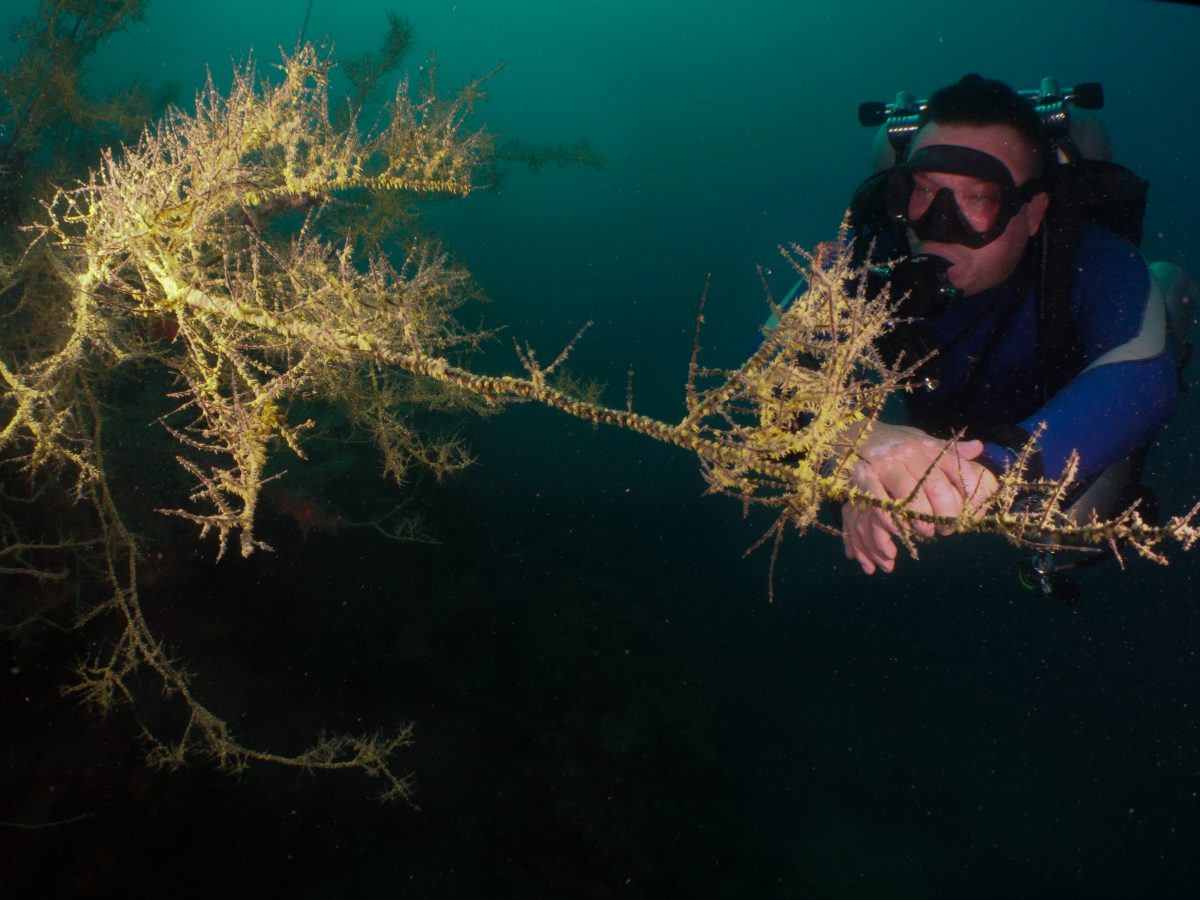
For my first official decompression dive we joined a scientist to film her work on the deep water Black Corals that exist in the gulf. These corals are extremely slow growing and she is studying their reproductive cycle.
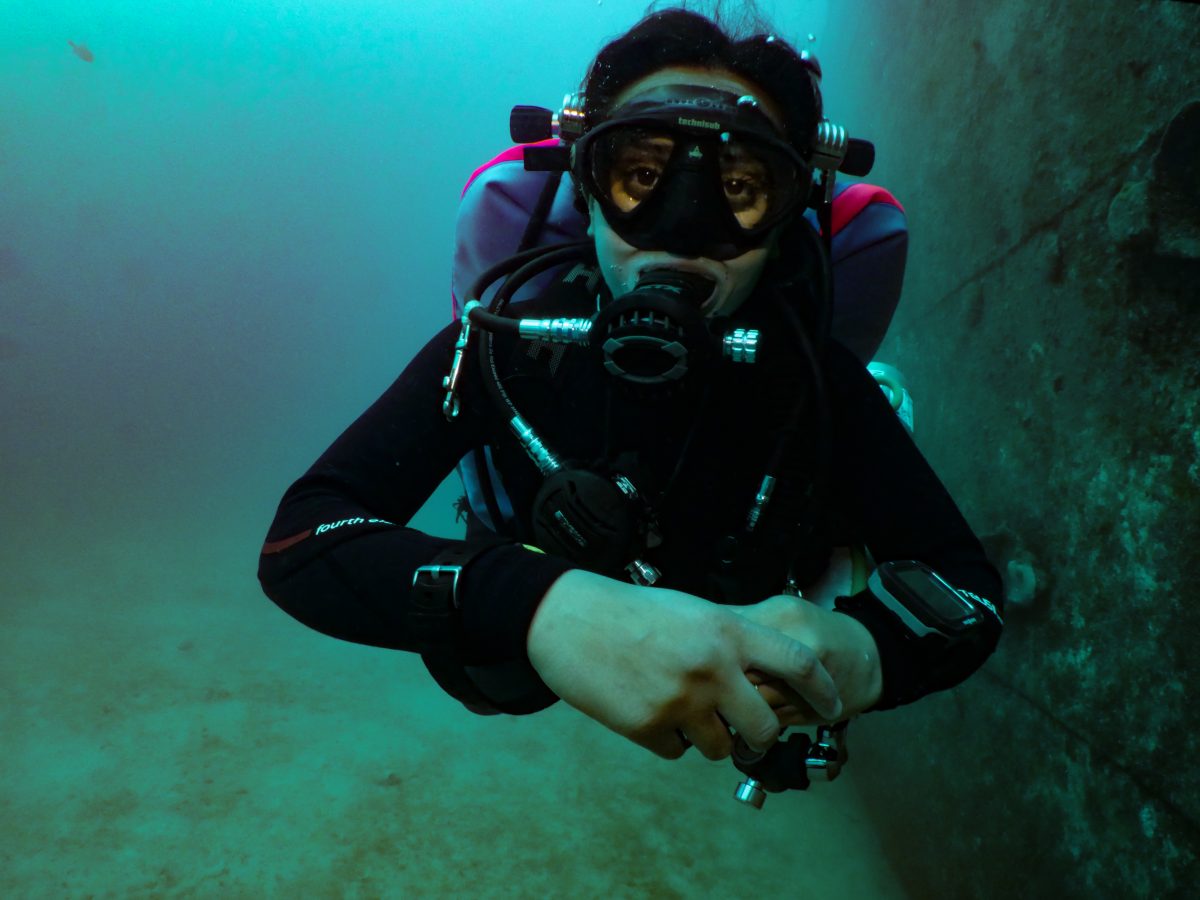
This training has been incredibly fun for me. Learning new skills, and new applications for my diving capabilities is very fulfilling. I was interested in starting tec-training as I would one day love to do survey work and study deep-water ecosystems. I also very much enjoy learning about the theory developed only within the last couple of decades that has enabled us to explore ecosystems previously so inaccessible in such an intimate way! Luke and Afe at Cortez Expeditions are a pleasure to work with, and because of their long time involvement with the scholarship society, they made my second time in La Paz a great experience.
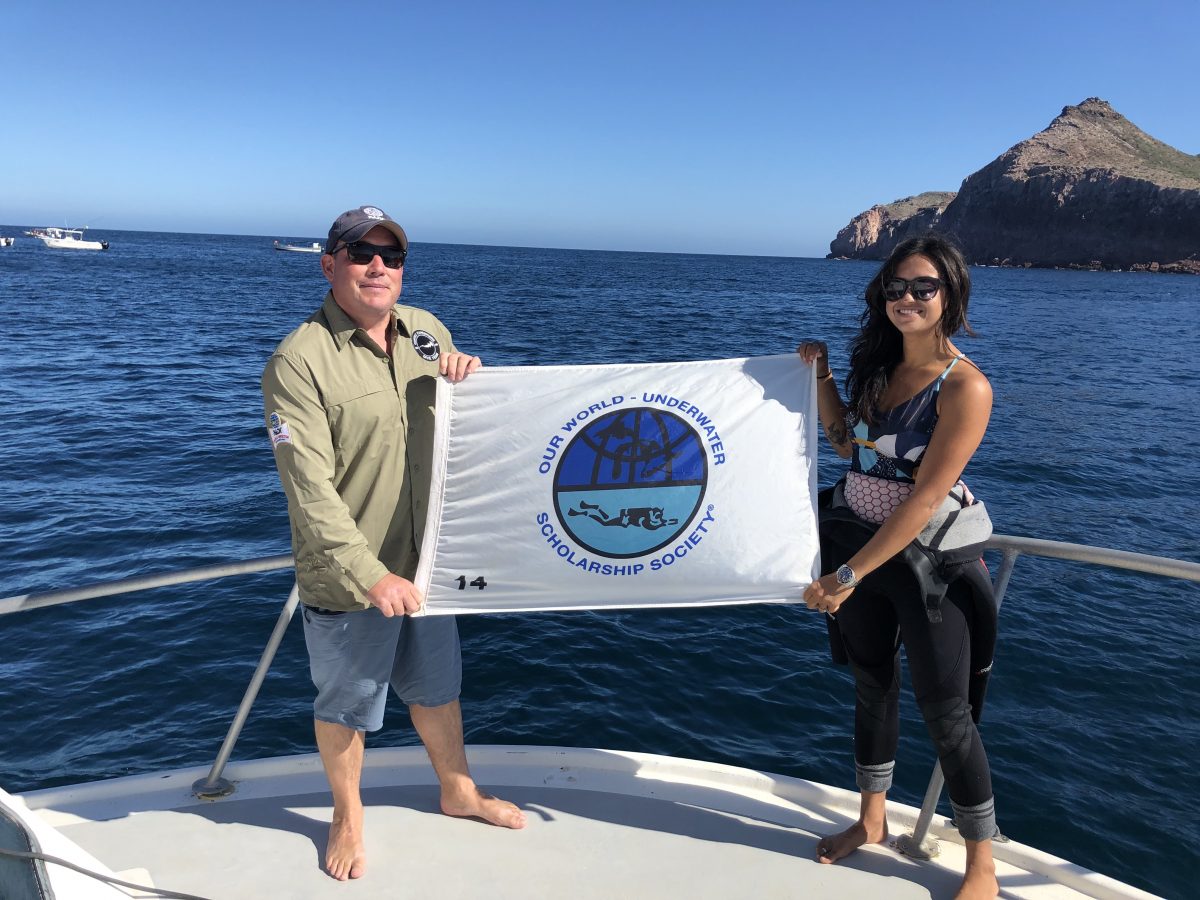
Thank you to Rolex, OWUSS and my other sponsors for making this possible. I also loved diving with my new Halcyon Backplate!
